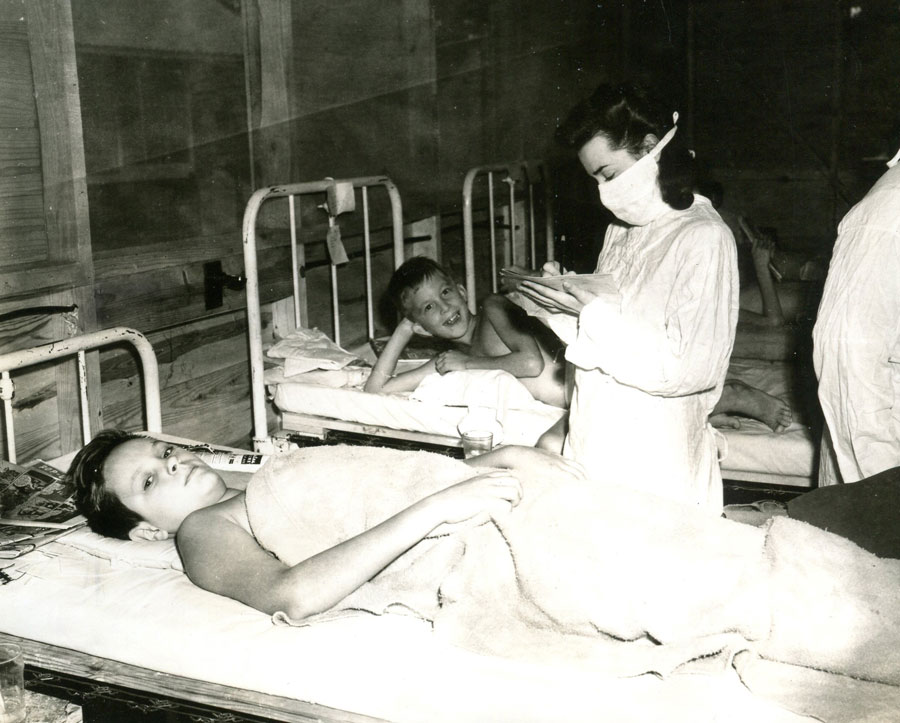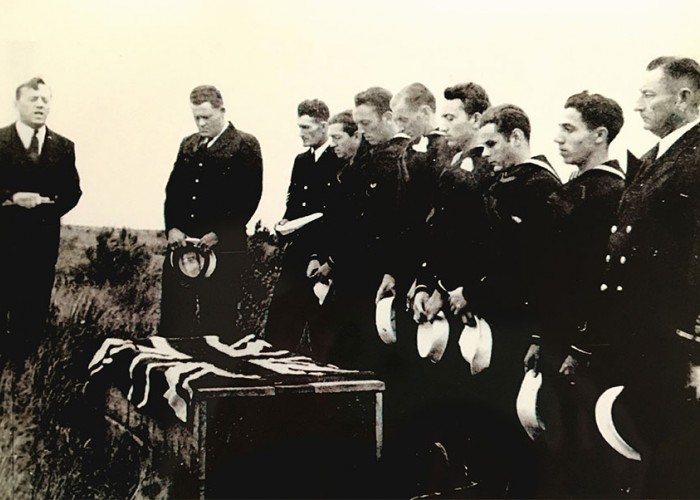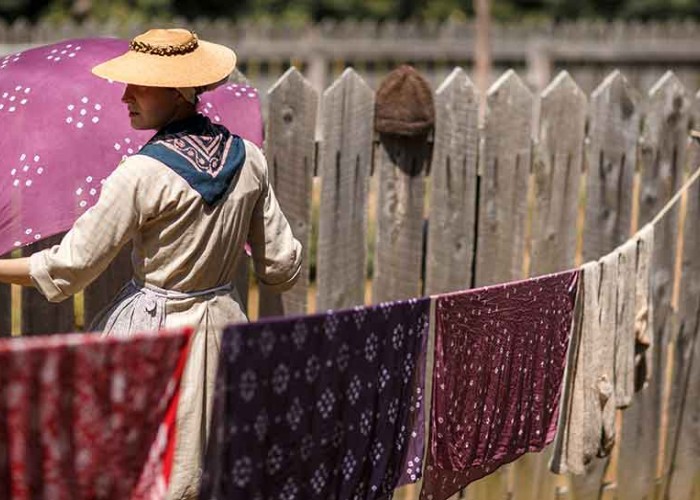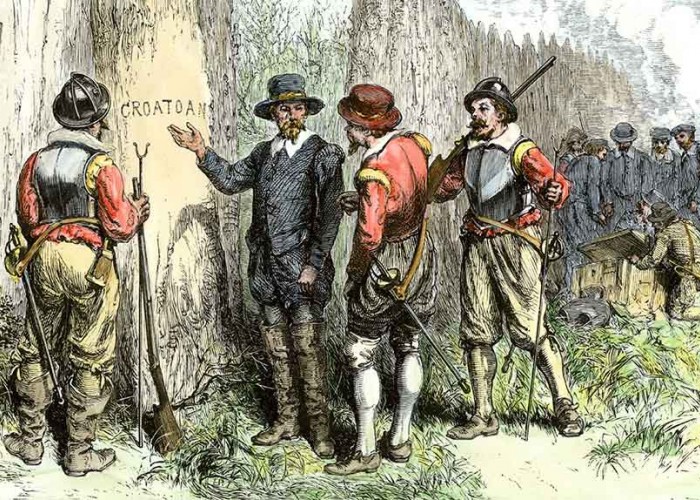Fight Against Polio Led to ‘Miracle of Hickory’
A community’s effort was one of many that helped stem NC epidemics
By Donna Campbell SmithThe people of North Carolina are a strong and determined lot, who have shown, time and time again, that they are fighters. Perhaps those characteristics were never more apparent than during the polio epidemics of the 1930s, ’40s and ‘50s.
The epidemics are still imprinted in the minds of many North Carolinians. Some have grown up with family stories of relatives or neighbors who had polio. Sandra Lee Allen’s father, Delbert Daniel Allen, had polio when he was 16 years old. Sandra remembers him talking about how the doctors said he would never walk again.
“The house they lived in had a porch railing on it,” Sandra explains. “He said he used his crutches to get up on the railing, and was walking the railing one day when his Mother came out.”
Delbert got a spanking for that trick, but one can imagine his mother’s relief that he’d proven the doctors wrong.
Delbert went on to attend business school. Near the end of the Second World War he was drafted into the army — he was glad to serve, having been previously turned down due to his disabilities. After the war, he went to work as the county sanitarian for Washington and Tyrell counties. He also owned and operated Allen’s Coin Operated Laundry.
Sandra remembers he always walked sort of with his shoulders thrown back. He trained his stomach muscles to take over for the paralyzed back muscles. He did not let polio hold him back from a productive life.
Fear and unknowns
Polio spread throughout central North Carolina in 1935, making it one of the few states in the South to suffer the epidemic. In the 1940s, a second wave hit our state. This time it began in the western counties and swept through to the east, striking fear into the hearts of everyone, especially parents of children, the primary victims. In 1944, there were 861 cases reported, according to the NC History Project. In 1948, the numbers rose to about 2,500 cases with 143 deaths.
Fear was compounded by initially not knowing how the virus was spread, nor how to effectively treat it. People who had to travel through towns known to have polio rolled up their car windows, afraid that somehow the germs would reach them from breathing the air as they drove through. The State Board of Health warned citizens to avoid sending youngsters to children’s group activities such as playgrounds, swimming pools, summer camps, movie theaters, church and Sunday school. Flies and mosquitoes were suspected of carrying the disease, but researchers later found that the infectious virus was spread from person to person.
“Though I was pretty young, I remember the fear of polio,” says Kathy Bundy of Raleigh. She never had polio, but recalls protective measures like avoiding public swimming pools. “I also remember being in a very long line out the door and down the hill when the polio vaccine became available and my family went to get it. Then we could go swimming again!”
Andy Allen was only about 18 months old when he contracted polio. Being so young, he can’t remember ever seeing doctors other than those at the local clinic in Plymouth, his hometown.
“I have checked my old medical records from the clinic and cannot find any reference to ever being treated for polio by them,” Andy says. “However, I must have seen a doctor at some point, because I remember my parents and others telling me I wore some type of arm brace for a while.”
The polio he was infected with was concentrated in his upper left arm, between his elbow and shoulder.
“I feel very fortunate to have had only a very mild infection with the only obvious [lasting] effects of my polio being that my upper left arm is much smaller in diameter than that of my upper right arm,” Andy says. “I have never thought, despite the fact that I contracted polio, it hindered me from pursuing anything I wanted to achieve.”
People who didn’t have symptoms could still pass the virus on to others. Polio was often hard to diagnose because symptoms varied widely. Most people with polio showed no symptoms at all, while about 25 percent had flu-like symptoms including headaches, fever and vomiting. A smaller percent who contracted the disease became paralyzed.
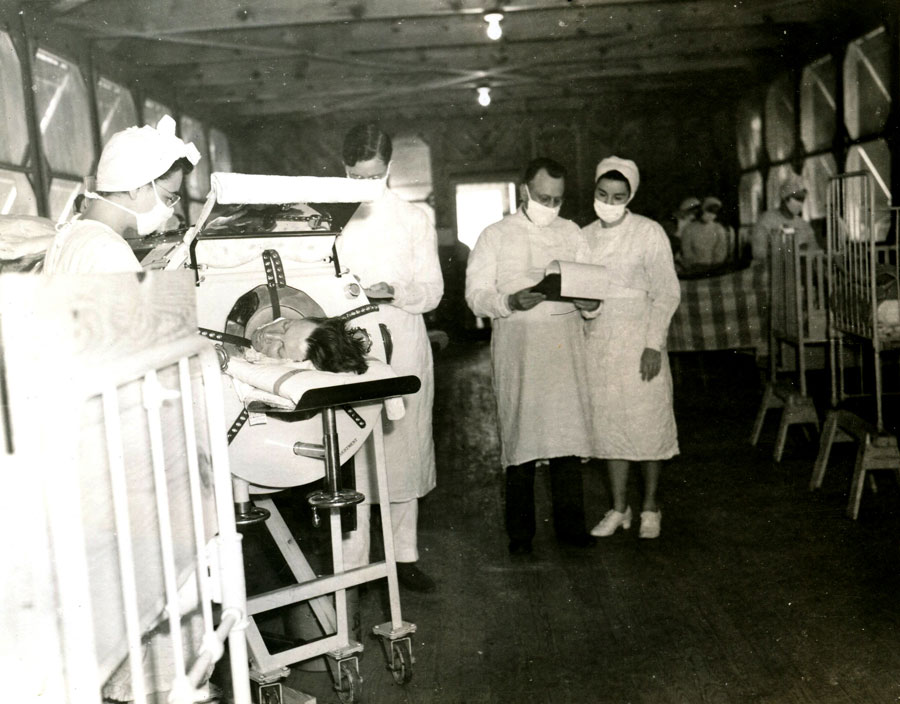
Evelyn Wannamaker, supervisor of the Bulbar Ward, and Dr. Harley E. Henry, Hickory surgeon, look over the chart of 26-year-old iron lung patient Boyce Rash of North Wilkeboro. Despite all efforts, he died on September 21, 1944, one of 12 deaths recorded at the hospital. It was only after his death it was learned he had transverse myelitis — another form of paralysis, not polio.
Seeking treatment
During the 1940s outbreak, the closest treatment center for those in western counties was at Charlotte Memorial Hospital, which had a polio ward. It quickly filled. This led to what is today called the “Miracle of Hickory.” In just three days’ time, the citizens of Hickory came together to build and staff an emergency hospital for treating polio victims. They expanded a building on 62 acres called Lake Hickory Health Camp, a lake-side fresh air camp for underprivileged children. The campers were sent home, and the people of Hickory went to work on building a polio center. That was on Thursday.
Just three days later, on Saturday, June 24, 1944, the Hickory Emergency Infantile Paralysis Hospital opened and admitted its first 16 patients. The seemingly miraculous feat attracted national attention. Life Magazine covered it with a photo essay in their July 31, 1944 issue.
The hospital was built with local donations from the people of Hickory, who also provided the labor. The U.S. Army supplied tents and cots. Once the center was built, funding came primarily from the National Foundation for Infantile Paralysis, founded by Franklin Delano Roosevelt (himself a victim of polio). The foundation later became known as The March of Dimes.
The hospital operated for nine months, during which 663 people were evaluated, 528 were diagnosed with polio, and 454 were admitted and treated at the hospital, according to the Hickory Museum of Art. Patients came from 74 counties across North Carolina, with a few from out of state. Of those patients, 55 were African American and one was American Indian. Only 12 died at the hospital — fewer than at any other treatment facility during that time period. When the facility closed in March, 87 patients were transported to a new treatment center at Charlotte Memorial Hospital.
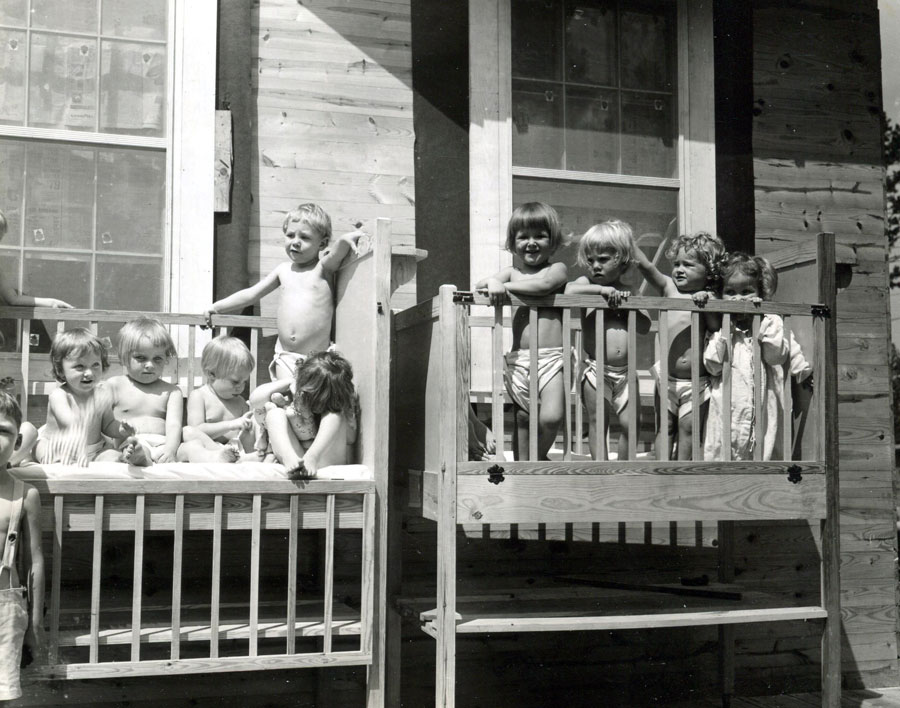
The toddlers of Ward 8 receive both their first sun bath, and a glimpse of their visitors, on the deck of the newly completed ward.
Prevention and eradication
Jonas Salk invented the polio vaccine in 1955. Many parents who knew first-hand the seriousness of the disease were quick to protect their families with it — Delbert Allen made sure Sandra and her sister received it as soon as it was available.
In 1959, North Carolina ordered that all children in the state receive the vaccine, and in 1962 Albert Sabin introduced the oral vaccine, administered on a sugar cube.
Many baby boomers across the state will share stories of standing in line to receive their vaccine, which effectively ended polio in North Carolina and the rest of America.
-
More North Carolina History
-
Share this story:

